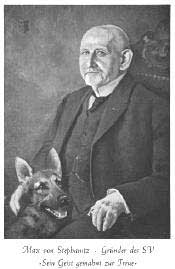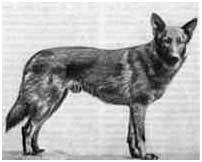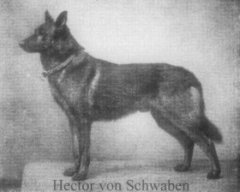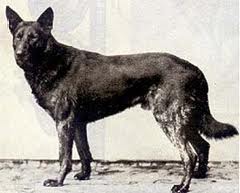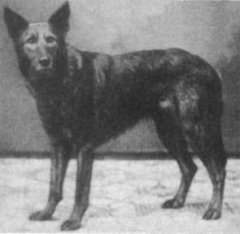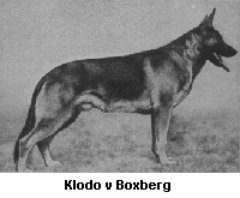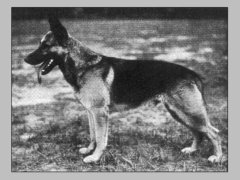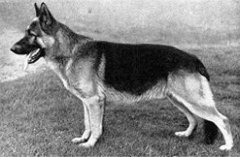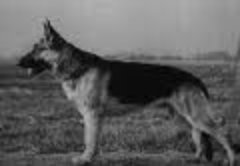|
"Take this trouble for me;Make Sure my Shepherd dog remains a working dog,For I have struggled all my life long for that aim"Captain Max Von Stephanitz1864 - 1936 |
How it all began
Horand Von Grafrath - originally known as Hektor Linksrhein, Von Stephanitz met Hektor at a dog show in Western Germany, he was so impressed with the dog and it's obedience to its master, its powerfulness, endurance, intelligence and zest for life that he purchased the dog for 200 German gold mark. Von Stephanitz then re-named the dog and it became the very first registered German Shepherd dog. |
|
Hektor Von Schwaben was one of Horands most celebrated offspring. Hektor was the second German Sieger, He was mated with his half sister and also with daughters of his own sons, Beowulf, Heinz von Starkenberg and Pilot III. The idea of inbreeding heavily was to consolidate the bloodlines |
|
|
Beowulf was one of Hektors sons |
|
Pilot Ruede, Son of Hektor |
During world war I all things German were looked upon with distaste it was then that England changed the name of the German Shepherd to Alsatian, In America they changed the name to Shepherd dog. After the war ended servicemen returned home telling of this wonderful dog that the Germans had made good use of during the war using them as messenger dogs, red cross dogs, guard dogs and tracking dogs. Many brought a German shepherd dog home with them and the stunning looks and attributes of the dog were captured by the public. The T.V programmes Rin Tin Tin and Braveheart also helped the breed rise in popularity. Unfortunately this only flooded the market with poor quality German Shepherds, which caused a downturn in the love of the breed. Von Stephanitz had become worried about the breeding of the German Shepherds often producing over-sized square dogs and the downturn of the quality of steady temperament. He and his fellow enthusiasts decided something drastic had to be done. In 1925 at the German Sieger show Von Stephanitz selected a dog that was quite different from all previous versions of the German shepherd. This dog had a far reaching gait, was of lower station and was deeper and longer in size. This was Klodo von Bozberg, he was of medium size grey(sable) dog. Klodo proved to be a very successful sire for the breed, producing a new type of German shepherd. It was here that marked the change in the appearance of the German Shepherd dog, whilst still preserving the integrity and characteristics of the old style German Shepherd it now had a more streamlined shape and took on the appearance that we all recognise as the German Shepherd of nowadays. Klodo was later that year exported to America and he is largely responsible for the Modern lines bred in North America. |
|
Meanwhile in Germany the breed had taken a turn for the worse, many of the dogs had been killed or had died due to starvation. What was left of the good stock was bred using out cross breedings as there was not a lot of line bred stock left to choose from. Soon though dogs of desired type were being bred. Breeders then changed breeding tatics back to the line breeding style and by 1949 there were dogs of quality substance appearing at dog shows across Germany. The new quality of dogs that had emerged were as a result of type breeding.
|
|
Axel von der Deininghauserheide |
|
Rolf vom Osnabruecker-land |
|
Hein v. Richterback |
Club Address: South Island German Shepherd League P.O. Box 2133 Christchurch |


